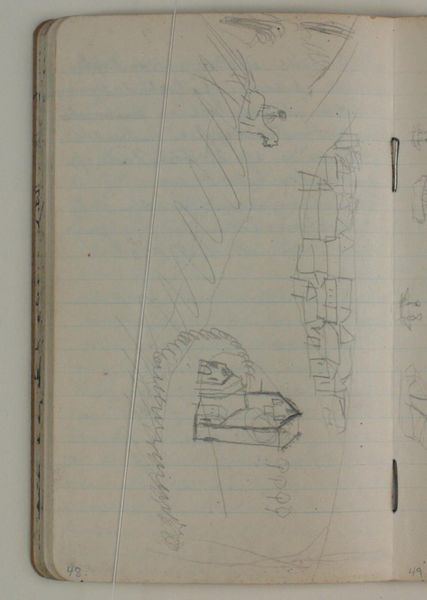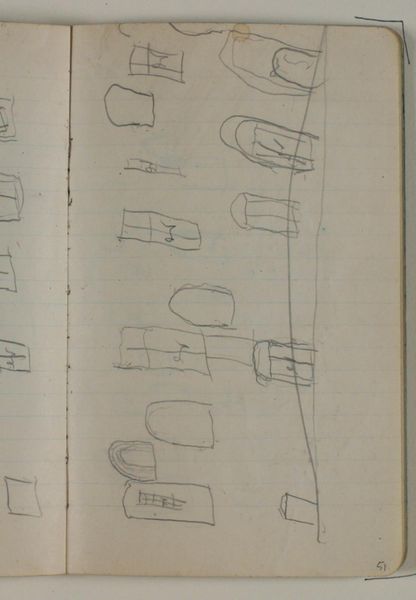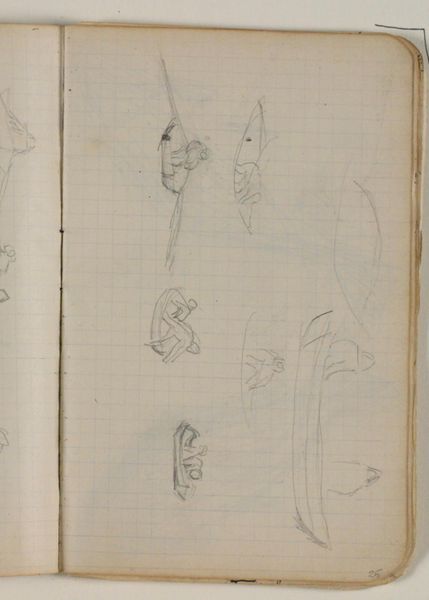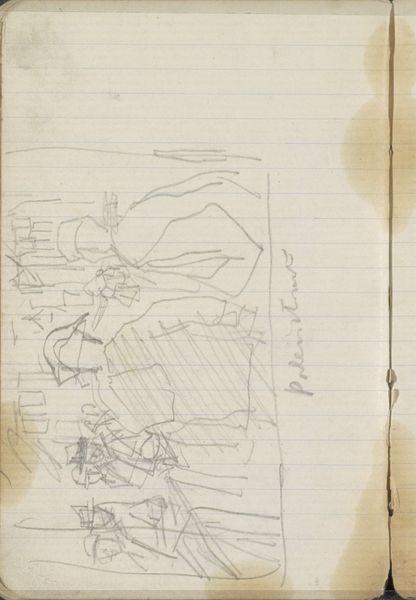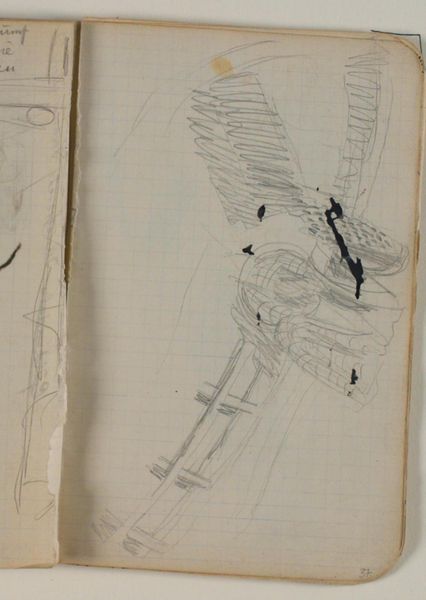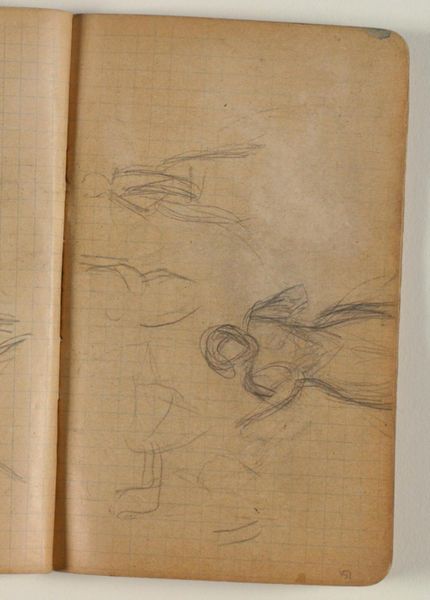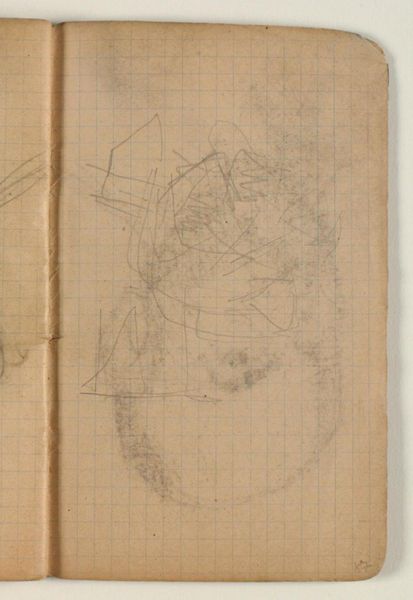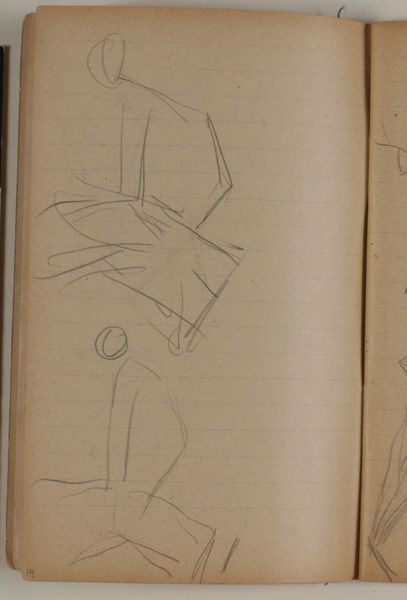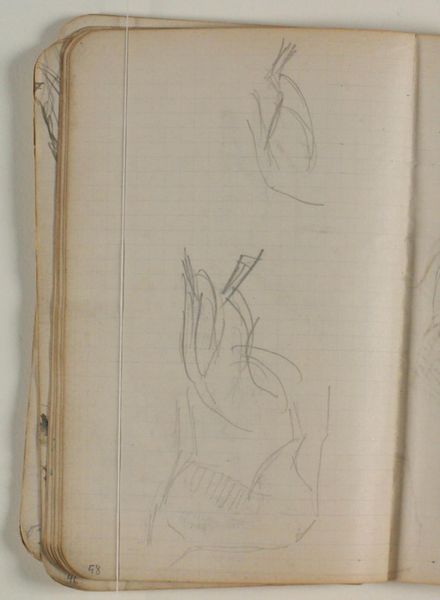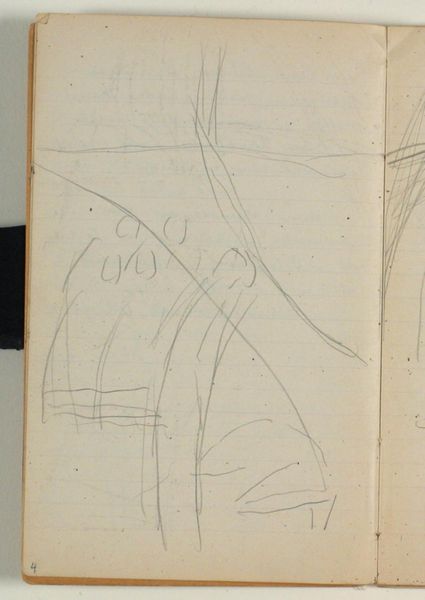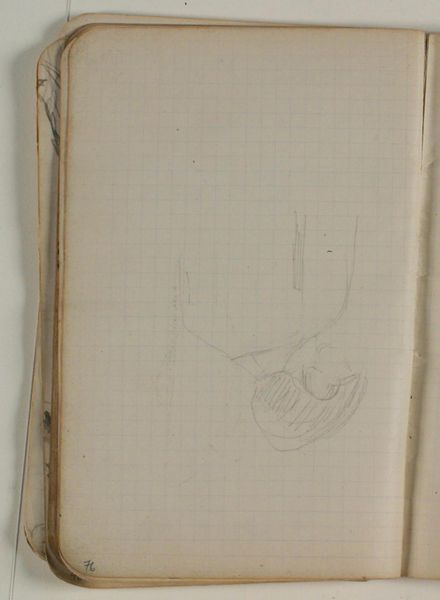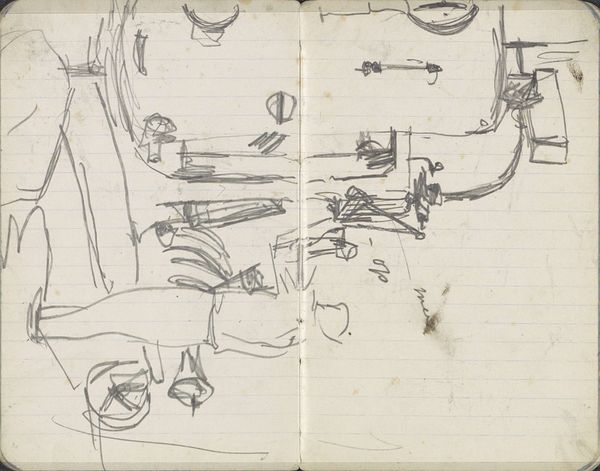
Forskellige tegninger. (Af Anna Larsen Stevns ?) 1933 - 1934
0:00
0:00
drawing, paper, pencil
#
drawing
#
landscape
#
paper
#
geometric
#
pencil
Dimensions: 175 mm (height) x 109 mm (width) (monteringsmaal), 175 mm (height) x 109 mm (width) (bladmaal)
Curator: This artwork, titled "Forskellige tegninger. (Af Anna Larsen Stevns ?)," roughly translates to "Various Drawings (By Anna Larsen Stevns?)." It’s attributed to Niels Larsen Stevns and dates back to 1933-1934. It’s currently held at the SMK, the National Gallery of Denmark. The piece consists of pencil drawings on paper. Editor: Wow, what a captivating sense of openness. My immediate thought is freedom; the sketched, barely-there lines give this such an ephemeral feel, like catching a half-remembered dream on the page. Curator: It’s intriguing to view it within the context of its creation, during the interwar period, particularly when considering the gendered assumptions prevalent in the art world at the time. Notice the tentative attribution of authorship—questioning if Anna Larsen Stevns might be behind these drawings introduces a fascinating layer of potential erasure and re-attribution of artistic credit. Editor: It’s almost as though we’re invited to participate in that very act of imagining authorship. You know, I keep wanting to put my own story in here, almost like automatic writing. Do you think the question mark invites that? Curator: Absolutely. It’s vital we engage with it critically, pondering the socioeconomic and political dynamics that likely influenced whose art was valued, preserved, and ultimately attributed within institutional collections. Consider the potential narrative shift if we center the artwork's interpretation on a woman artist’s gaze, perspective, and experience during that era. Editor: And how the drawings themselves change meaning! If these are sketches from Anna’s hand, these almost architectural landscapes might reflect, say, her silent observations, and offer resistance in how space is owned, felt, transformed... Curator: Precisely. Reframing it through a lens attentive to issues of identity and gender recontextualizes our understanding, encouraging us to explore art history from perspectives that are intersectional and decolonial. It pushes us to question the grand narratives and recognize marginalized voices within art. Editor: Okay, I think you’ve turned me from dreamer into activist—let's start dismantling some established norms, one line at a time! For our listeners, it may be good to ponder what’s brought to the fore here, and what else needs re-examination. Curator: I agree completely. This work challenges the audience to think critically, fostering a more inclusive and nuanced understanding of art history. Thank you for helping bring such critical and emotional nuance.
Comments
No comments
Be the first to comment and join the conversation on the ultimate creative platform.
